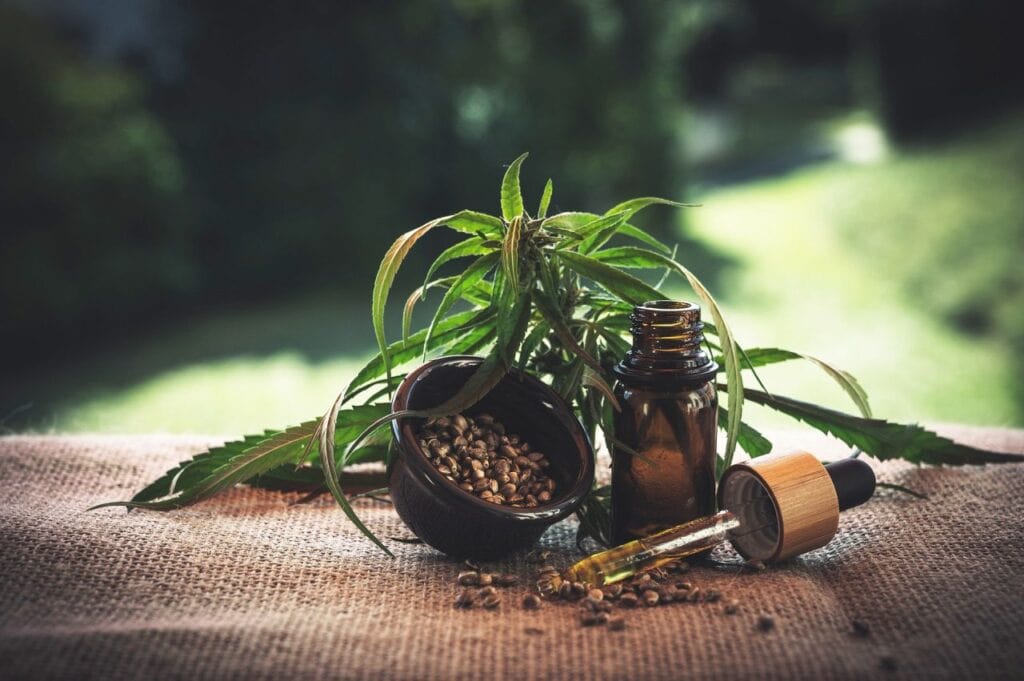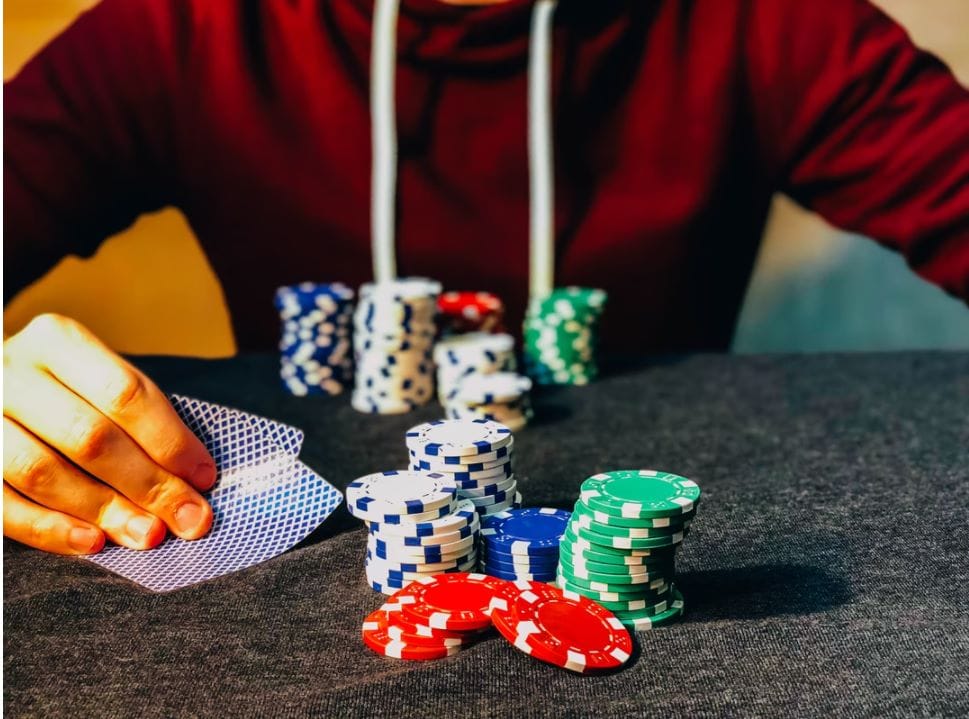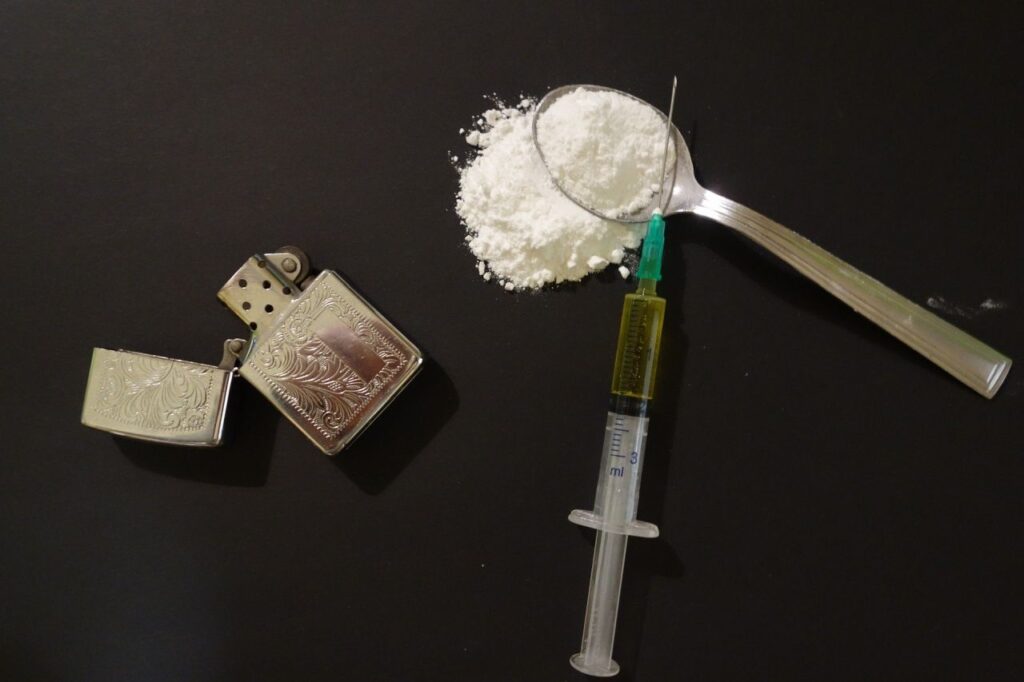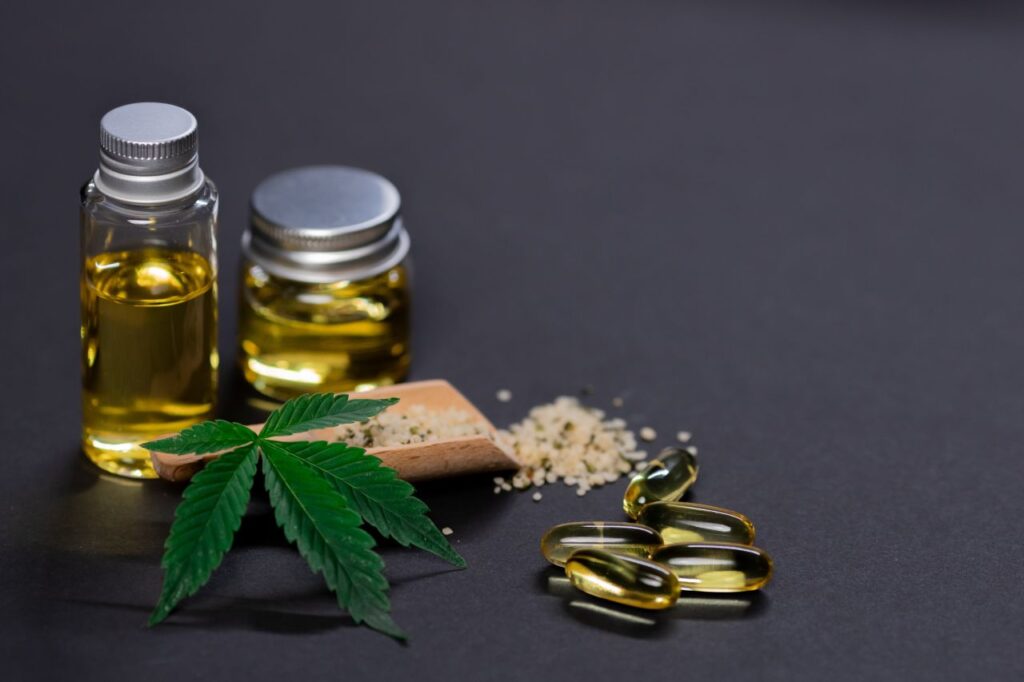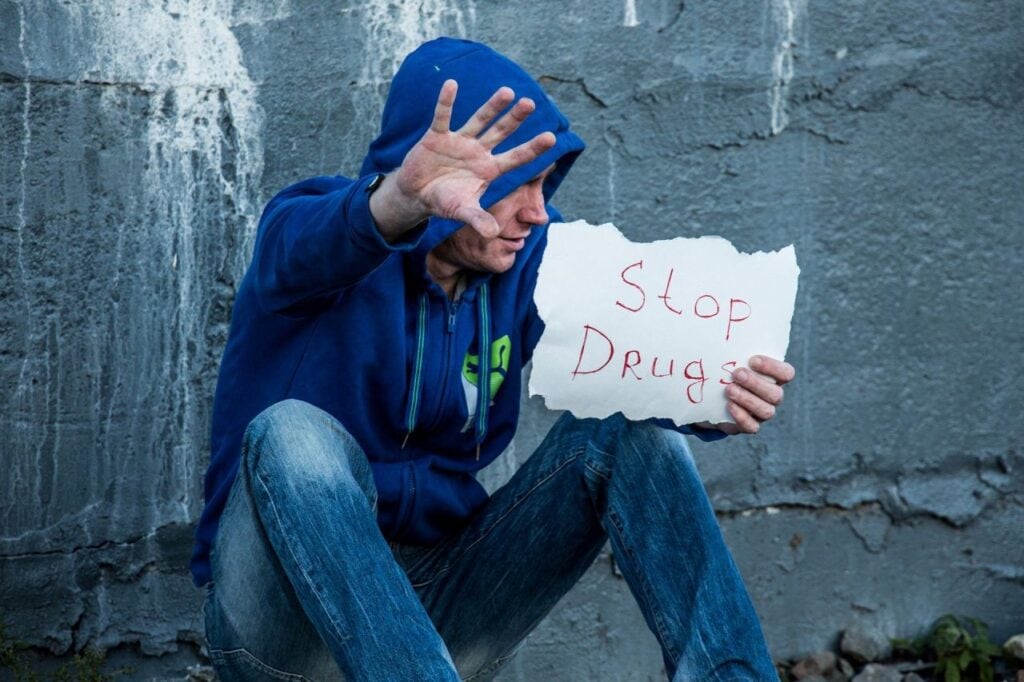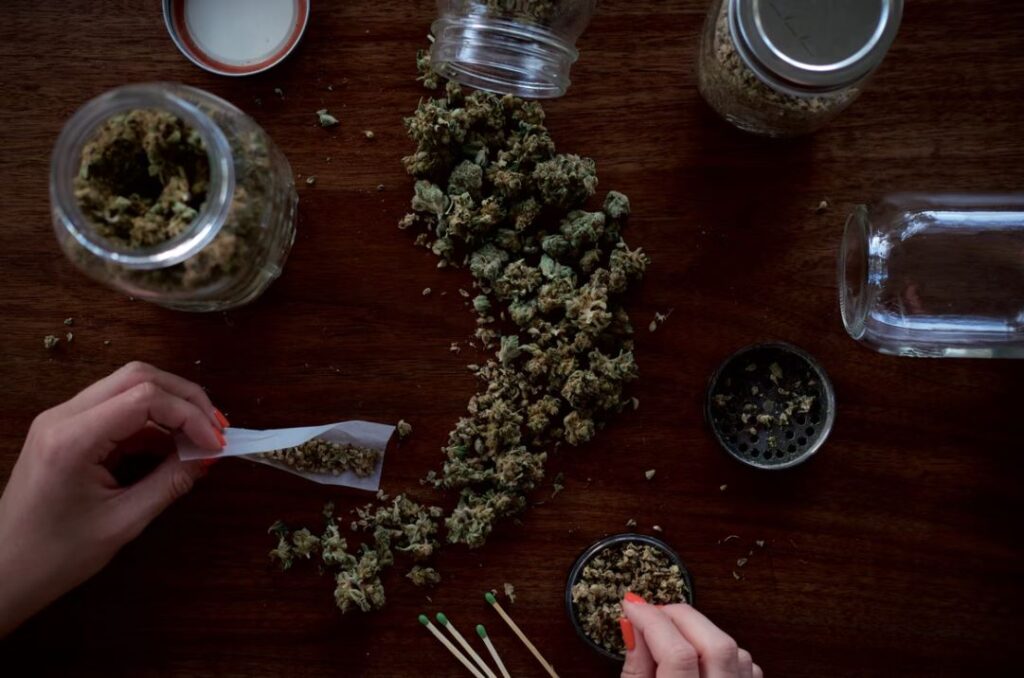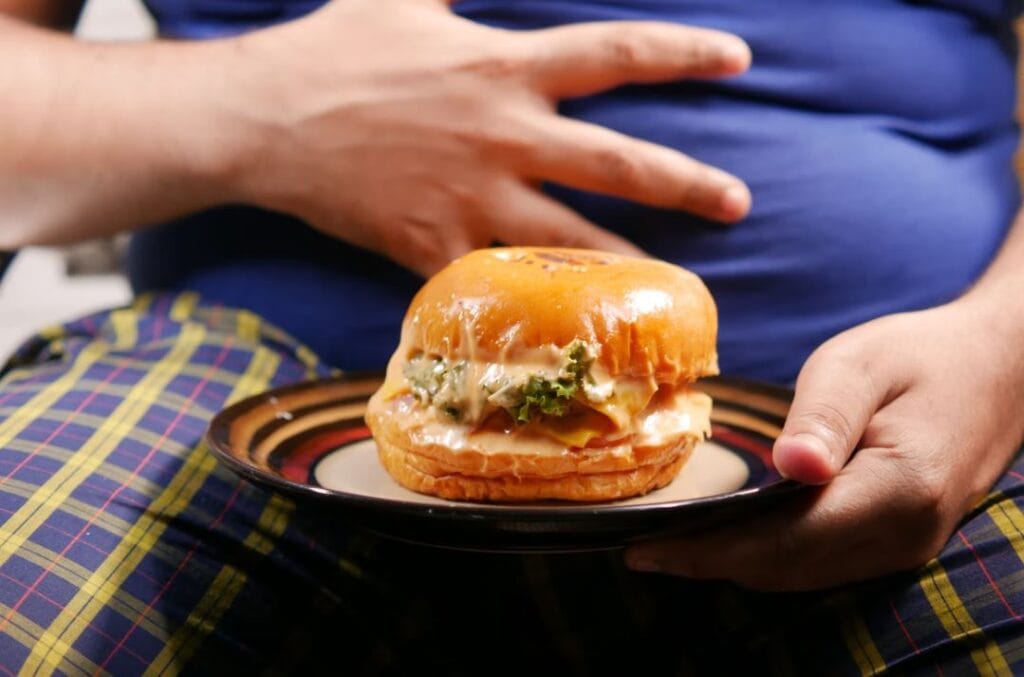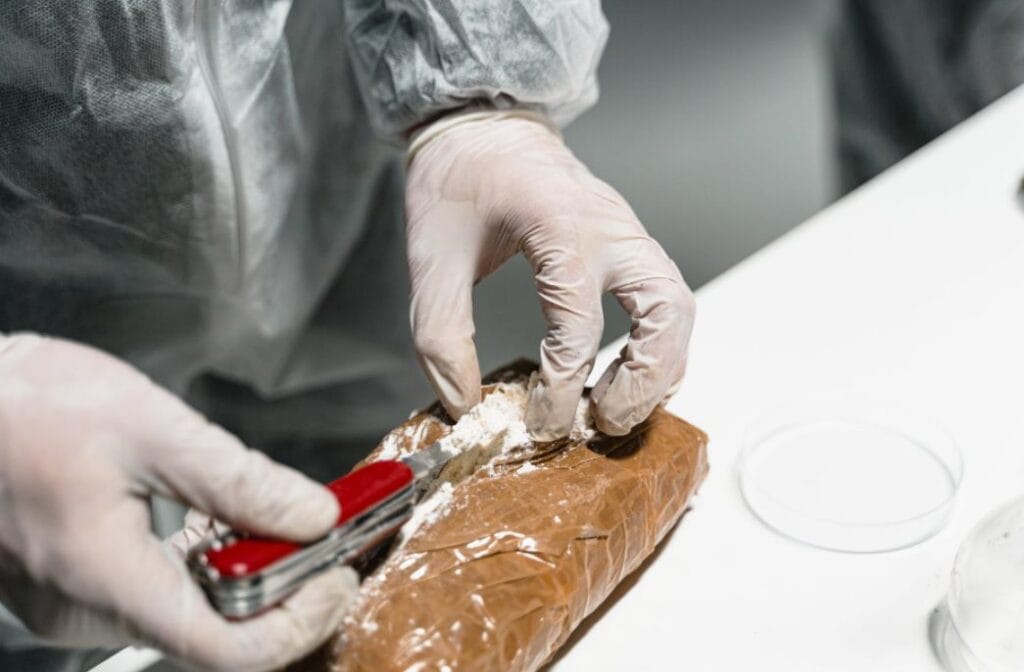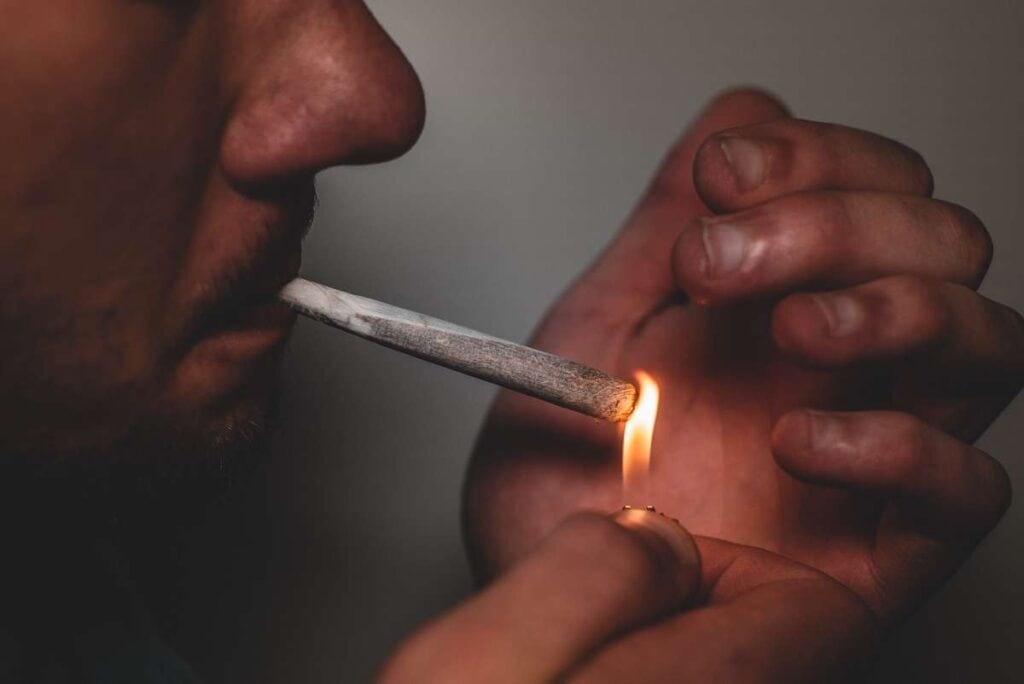Cannabidiol (CBD) is the main psychoactive ingredient in cannabis, which is used by millions of people throughout the world. Although some people use it for therapeutic purposes, the majority do so for fun. Unfortunately, among the many dangers associated with marijuana usage, addiction is among the most common unfavourable results.
Despite the prevalent belief that marijuana is not particularly hazardous, research has shown that use can have a number of negative impacts on one's health. Although it may be less likely to produce habit formation than some other opioids, there is still the chance for dependency and addiction. If you want to quit smoking marijuana, there are a number of things you can do to improve your chances of succeeding.
This article discusses some methods you can investigate if you want to give up marijuana use. You'll learn about the many withdrawal symptoms that may occur and about the various types of expert treatment that may be helpful.
This article will help you make a decision about Rehab Treatment Melbourne fees for different treatments.
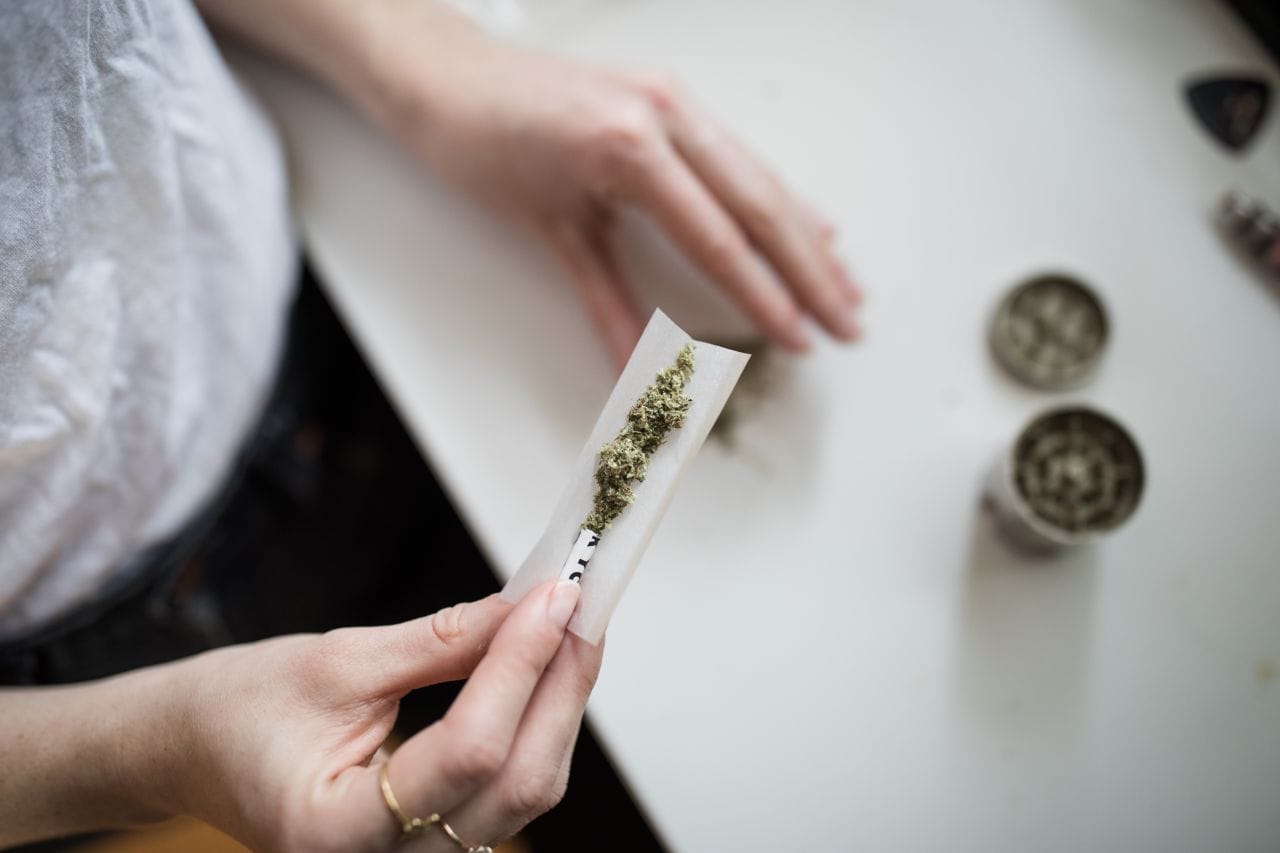
Pick One Method To Do It
Having decided to quit, you must now determine the approach that will be most successful in light of your individual situation and preferences. Quitting marijuana may be easier for some people than for others, but how difficult it is for you to quit may depend on how dependent or addicted you are to it.
People who started using marijuana at a younger age or who consume large amounts of the drug are at a greater risk of developing a problem related to cannabis usage. According to estimates provided by the National Institute on Drug Abuse (NIDA), approximately one in three people who partake in marijuana usage also struggle with a cannabis use disorder.
Two common strategies for kicking the habit of smoking weed are cutting back gradually or quitting cold turkey.
FAQs About Quit Smoking
- Never pick up a cigarette again.
- Stay occupied.
- If you have decided to utilise a NRT, you should start taking it right away.
- Participate in a support group for former smokers or implement a self-help programme.
- Take in a lot more water and fruit juice.
- Consume fewer or no alcoholic beverages.
- Steer clear of people who are currently smoking.
- Stay away from circumstances that could trigger a powerful desire to light up.
They do not require a significant amount of time or effort, yet they are sufficient to fulfil the role of smoking as a habit
- Take a sip from the glass of water.
- Eat a dill pickle.
- Take a chomp on a piece of the sour candy.
- As a nutritious option for something frozen to eat, try eating a popsicle or washing grapes and then freezing them on a baking sheet.
- Brush and floss your teeth regularly.
- Have some gum.
- Make sure you get lots of water. Drinking water can assist in the removal of harmful poisons and substances from the body.
- Consume an antioxidant-rich diet to improve your health.
- Exercise regularly.
- Stay away from secondhand smoke.
- Avoid being exposed to any pollutants.
- Spend time with folks who are optimistic and encouraging. They have the ability to completely alter your perspective.
- Drink less caffeine.
- Get some exercise or start a new interest.
- Bring along a bottle of water with you.
- Get adequate sleep.
- Give yourself a reward that will help you relax.
There are others who claim that drinking tea while smoking makes them feel more at ease. Others claim that they experience a mild rush of caffeine, comparable to what they receive when they drink it but considerably stronger and more immediate. Regrettably, it also has the potential to make you feel a little dizzy or lightheaded. This is due to the fact that you are taking in carbon monoxide.
Reduce the Amount You Use
Tapering refers to the process of diminishing one's drug use over time by reducing the amount of drug ingested. The goal of lowering withdrawal symptoms is achieved by progressively decreasing the dose of the substance being withdrawn from.
The American Society of Addiction Medicine (ASAM) agrees that gradual tapering is the best way to lessen the intensity of withdrawal symptoms. If you're going to take the gradual approach, there are several things you can do to increase your chances of success. If you do decide to adopt the gradual approach, read on.
- The time you provide yourself should be realistic. Pick a day on which you will stop smoking marijuana forever. Then, determine how much of a cut would be necessary for you to quit before the due date.
- Pick a method for slowing down gradually. A daily or weekly reduction in consumption of a certain quantity may be chosen. Alternatively, you may choose to use a cannabis product with less of an effect.
Immediately And Without Warning
The only step necessary to use this technique is to cease using the substance. Even though it's not an effective method and usually causes more severe withdrawal symptoms, some people choose to quit smoking cold turkey for a variety of reasons. It could be a helpful technique for eliminating clutter from your life and kicking bad habits, for instance. This method may prove more effective for people who lack confidence in their ability to progressively reduce their marijuana consumption.
Get Rid Of All Your Equipment.
Having access to weed and other smoking paraphernalia can make it more challenging to stop the habit. Getting rid of it or giving it away will prevent you from having easy access to it, which can help you avoid relapses as you go through withdrawal. You need to find a way that works for you to quit smoking weed. In the case of nicotine, for example, you have the option of either gradually tapering off the drug or quitting cold turkey.
Get Ready For The Withdrawal Symptoms
Those who have decided to quit marijuana use would do well to familiarise themselves with the withdrawal symptoms that may occur during the process of tapering off the drug. Doing so will help you mentally prepare for the onset of these symptoms and give you time to formulate a strategy for dealing with them. The most typical marijuana withdrawal symptoms include:
- Aggression
- Anxiety
- Adaptations of the appetite
- Cravings
- Depression
- symptoms similar to those of the flu, including a high temperature, sweating, and chills
- Headaches
- Irritability
- Sleep difficulties
- Gain or decrease of body weight
Most marijuana users who try to cut back will suffer from withdrawal symptoms for the first two weeks after they stop using. However, some people may experience post-acute withdrawal syndrome, in which these symptoms continue for weeks or even months (PAWS).
Dealing with the unpleasant symptoms of withdrawal might make it difficult, if not impossible, to quit using marijuana. On the other side, you can return to utilising the medicine if the physical and mental symptoms become intolerable.
During this time, it can be helpful to devise a plan that will encourage you to continue with your rehabilitation activities. To avoid getting off track, it's helpful to have a strategy in place. You should try to find methods of relieving your symptoms aside from consuming marijuana, and you may want to talk to a medical expert about your options. Reminding yourself that these feelings are only temporary and will vanish after a few days will help.
See our list of available Rehabilitation Programmes to help you make an informed decision for your treatment.
Understand Your Triggers
Getting rid of any pot paraphernalia at home is a crucial step towards kicking the habit for good. The drug itself should be the first thing to go, but you should also get rid of any paraphernalia like pipes, bowls, bongs, or vaporizers. When a drug is readily available, giving in to a craving seems like a less daunting and more alluring option.
Consider the causes of your marijuana cravings; this will help you deal with them more effectively. To provide just one example, have you notice that you tend to smoke more frequently at certain times of the day? Do you notice that you have a greater desire to smoke in specific environments, when dealing with specific stresses, or in the company of specific people?
You can develop effective tactics to deal with the causes of your drug use after you have a firm grasp on what sets off your habitual drug use. One way to accomplish this is to remove or lessen the influence of circumstances that might lead one to use marijuana. If none of these options work, you may want to consider learning healthy coping mechanisms to help you handle your urges.
Forgive yourself if you make a mistake and start smoking again. Attempting to halt almost always results in at least one slip. Several studies have found that it often takes a few tries for a person to succeed. Just because you made a mistake doesn't imply you're doomed to a life of failure.
Get to Know Your Own Triggers
Weaning yourself off the substance gradually or quitting cold turkey, it is important to be mindful of the people, things, and situations that can trigger cravings and use. Knowing these potential roadblocks will allow you to develop strategies for avoiding or coping with them, potentially increasing your productivity.
Advice On How To Give Up Marijuana Use
There are a few strategies that may help you stay committed to your goals regardless of the method you choose to use to quit smoking marijuana. Listed below are a few possibilities you might want to explore.
Look for Distractions.
If you're suffering unpleasant withdrawal symptoms, distracting yourself with positive activities can help. It can also help you divert your attention away from any drug cravings you may be experiencing at the same time. Don't turn to marijuana for distraction; instead, engage in pleasurable pursuits. If you discover that you have a strong urge to smoke on the weekends, for example, it is important to find ways to keep yourself busy and distracted so that you don't give in to that urge. Establishing a new routine can be helpful when attempting to quit a narcotic like marijuana. However, continuing to engage in destructive behaviours, such as frequent drug use, can make it substantially more tough to get sober, and sticking to a regular routine can be helpful for mental health during times of elevated stress.
Exercise
If you're attempting to wean yourself off of marijuana, you might find that keeping up with a regular workout programme is beneficial. To begin, it may provide welcome distraction anytime a desire arises. It can help alleviate withdrawal symptoms, in addition to making you feel better and providing you more energy. Research suggests that regular exercise can boost the effectiveness of various treatments for cannabis use disorder. Exercise, for instance, may alleviate withdrawal symptoms, help with stress management, and lessen drug cravings because it might mitigate the effects of marijuana usage on the systems that regulate stress and rewards. This is due to the fact that the systems in charge of regulating stress and rewards might be impacted by marijuana use.
Take Good Care of Yourself
Taking good care of oneself is of highest importance during this time since it may be challenging to manage with the symptoms of marijuana withdrawal. Prioritize getting plenty of sleep and eating foods high in omega-3 fats to keep yourself healthy. Vitamin D can also play a significant role. Unfortunately, many people do not get enough vitamin D from their diets to avoid being deficient. To find out if vitamin D pills are right for you, talk to your primary care doctor. Practicing stress-reduction methods like deep breathing and progressive muscle relaxation can be helpful if you frequently experience tension or worry. Strive for a sense of equilibrium in your personal life as well. Mindfulness practises can help you better understand your own wants and needs by training you to focus on the present moment.
Find Some Help Here
Aside from your own efforts, your social support system can play a crucial role in your ability to achieve your goals. If marijuana is an integral part of much of your social life, you may find that some of the individuals in your life provide less support. Under these conditions, it's important to evaluate your connections and the places you frequent to determine whether any adjustments need to be made.
Create barriers between yourself and the folks who are making your quit attempt more challenging. Talk about your goals with supportive people in your life. You can count on them to supply the inspiration and aid you need to realise your ambitions.
Change up your daily routine.
If you realise that you're using cannabis excessively, altering your behaviour can help you wean off the drug. If you are someone who lights up first thing in the morning, you may want to try some of these alternatives.
- Meditating
- Going out for a stroll today
If you have a habit of smoking before going to bed, try not to:
- Readings
- Drinking anything soothing, such hot chocolate or tea, to unwind and relax.
Understand that it takes time and effort to change old behaviours into new ones. You need to try a few various methods and be gentle with yourself if you can't seem to stick to your new routine straight away.
How to Receive Treatment for an Addiction to Marijuana?
One of the most important things to remember if you're trying to kick the habit of using marijuana is that you're not in this alone. If you get help from an addiction specialist, you have a better chance of successfully quitting marijuana. Consult a medical doctor or mental health expert first to determine what kind of treatment is right for you. In order to manage the overlapping mental health disorders, your doctor may prescribe medication.
Are you looking for the best rehab centre? Then Refocus Rehab Melbourne is the answer.
In most cases, psychotherapy is advised as the treatment of choice for marijuana use disorder. Specific strategies include:
- Behavior and cognitive therapy. CBT, or cognitive-behavioral therapy, is a form of behavioural therapy used to address a wide range of mental health problems with the underlying concept that many harmful behaviours stem from unhealthy thought patterns. In this context, CBT refers to cognitive behavioural therapy, one of several acronyms that have been coined to identify this treatment modality. Through CBT, an individual is able to become more self-aware of their negative thought patterns, learn more adaptive coping mechanisms for their emotions, and recognise these patterns when they arise (CBT).
- The state of being ready for anything. Using prizes and incentives to motivate patients to adopt positive lifestyle changes is the focus of contingency management, a therapeutic approach. Medical experts employing a treatment technique known as contingency management may provide patients material prizes in exchange for certain behaviours (like staying sober).
- Treatment aimed at increasing one's drive. Those dealing with drug abuse problems might benefit from motivational enhancement therapy by overcoming any resistance they may have to treatment and igniting a genuine desire to make positive changes in their lives.
Treatment options for marijuana addiction (often referred to as "rehab") are quite similar to those used to address dependency on other substances. Evidence-based therapies, such as Twelve-Step facilitation, cognitive-behavioral therapy, motivational enhancement therapy, and other scientifically valid approaches, can be effective treatment options for addiction, depending on the individual's circumstances, drug abuse level, and treatment requirements. Motivator training is another method with a solid scientific basis.
One method to lessen the pain and potential unpredictability of withdrawal is to go through it while under the supervision of medical specialists and with the emotional and psychological support of a full treatment programme. Professional therapy may aid individuals in coping with the withdrawal period, which may be a significant setback to further recovery efforts if no assistance is provided during this time. Close supervision, medications for certain symptom relief, and other forms of supportive care can help pave the way to long-term recovery, even though no pharmacologic interventions have been approved for the management of cannabis withdrawal or that specifically treat cannabis use disorders at this time. Self-help strategies are crucial, but there will be times when you need more support. Consult your family doctor or try to track down a psychiatrist or psychologist who focuses in addiction treatment.
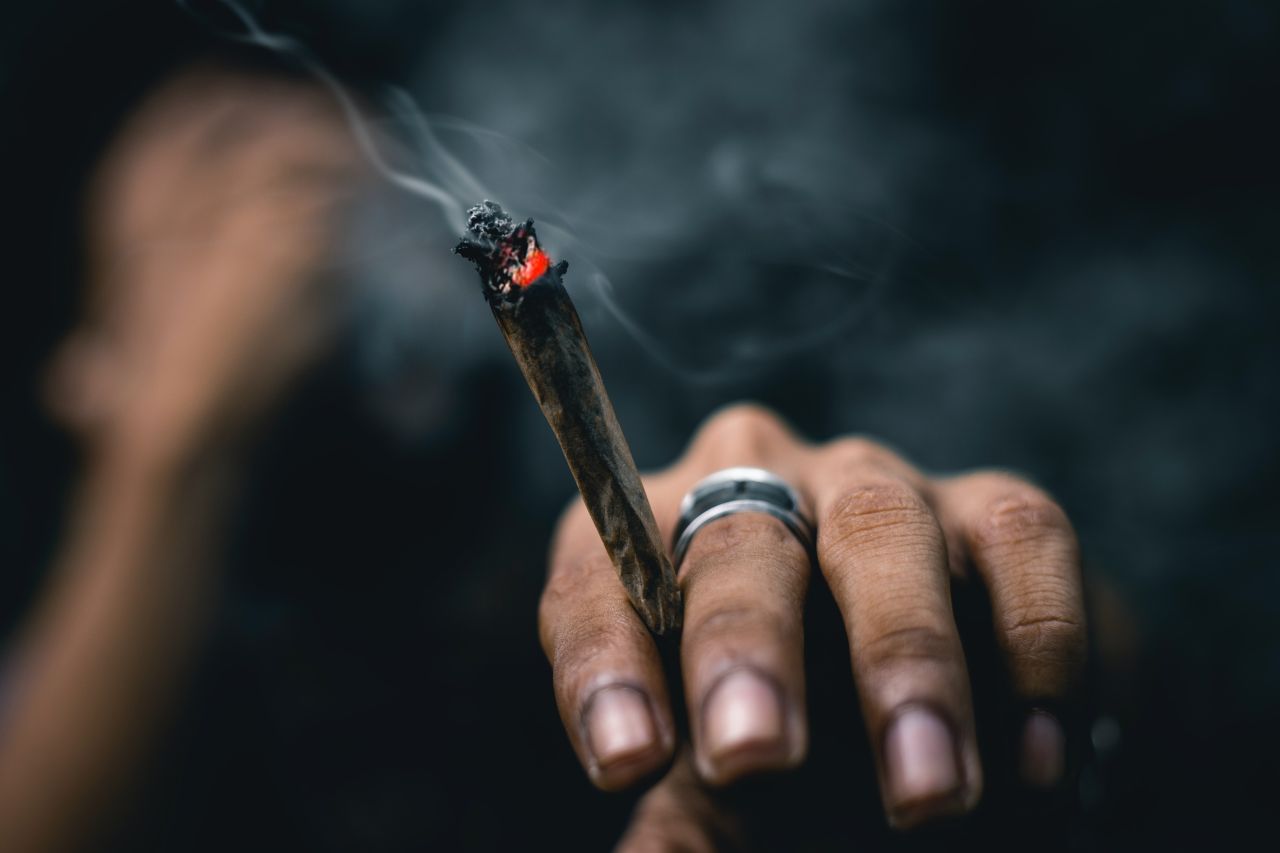
Tips To Help Someone Quit Marijuana
Have An Intimate And Straightforward Discussion.
Remain encouraging and nonjudgmental as you list specific behaviours or actions that worry you.
Refuse To Enable Other People. Be Assertive, And Set Boundaries.
Do not enable them by excusing their absence from work, school, or other commitments, by giving them money, or by helping them avoid legal trouble. Do not try to justify shirking your duties by missing work, school, or other commitments. Instead, I'd like you to urge them to accept responsibility for their actions.
Demonstrate That You Have Faith In Them.
Tell them you have faith in their healing potential and offer to help them on their path to wellness.
Please Provide Information Regarding Treatment
If you need guidance, talk to your primary care physician or a professional in the field of addiction. Explore the many treatment options, taking into account price and insurance coverage. Additionally, research the meeting times and locations of a nearby support group.
Put Your Mind At Ease About The Detoxification Process.
Addiction treatment is often avoided because of the fear of the detox process. If your loved one is also misusing alcohol or other substances, reassuring them that detoxing under medical supervision is the safest and most comfortable option is crucial. Doctors may also prescribe medication to lessen the patient's anxiety or pain during the procedure.
Be Patient.
Do not let this deter you if you are not yet willing to admit that you have a problem. You're the one who started this, so it stands to reason that you're giving what you just said some thought. In other words, stick rigidly to the boundaries you've set up, and deal with the issue afterwards.
Pay Attention To Your Health.
It's upsetting to have a loved one who is struggling with substance abuse in your life. Whether or whether they admit there is a problem, you should not risk your health. Keep active and eat a balanced diet to maintain good health.
Conclusion
If you want to quit smoking marijuana, there are a number of things you can do to increase your chances of success. How difficult it is for you to quit may depend on how addictive or dependant you are. Two common strategies for quitting are cutting back gradually or quitting cold turkey. The time you provide yourself should be realistic. Pick a day on which you will stop smoking marijuana forever.
A daily or weekly reduction in consumption of a certain quantity may be chosen. Alternatively, you may choose to use a cannabis product with less of an effect. You should try to find methods of relieving your symptoms aside from consuming marijuana. Reminding yourself that these feelings are only temporary and will vanish after a few days will help. Getting rid of any pot paraphernalia at home is a crucial step towards kicking the habit for good.
If you're trying to wean yourself off of smoking marijuana, there are a few things you can do to help ease withdrawal symptoms and lessen drug cravings. Exercise, for instance, may help alleviate withdrawal symptoms as well as help with stress management and lessen drug cravings. Strive for a sense of equilibrium in your personal life as well. If you are someone who lights up first thing in the morning, you may want to try some of these alternatives. Consult a medical doctor or mental health expert first to determine what kind of treatment is right for you.
Cognitive behavioural therapy (CBT) is a form of treatment used to address a wide range of mental health problems. CBT involves becoming more self-aware of negative thought patterns and learning coping mechanisms for emotions. “Have an Intimate and Straightforward Discussion. Remain encouraging and nonjudgmental as you list specific behaviours or actions that worry you. Reassure them that detoxing under medical supervision is the safest and most comfortable option. Explore the many treatment options, taking into account price and insurance coverage.
Content Summary
- Unfortunately, among the many dangers associated with marijuana usage, addiction is among the most common unfavourable results.
- Despite the prevalent belief that marijuana is not particularly hazardous, research has shown that use can have a number of negative impacts on one's health.
- If you want to quit smoking marijuana, there are a number of things you can do to improve your chances of succeeding.
- This article discusses some methods you can investigate if you want to give up marijuana use.
- You'll learn about the many withdrawal symptoms that may occur and about the various types of expert treatment that may be helpful.
- This article will help you make a decision about Rehab Treatment Melbourne fees for different treatments.
- Pick One Method To Do It Having decided to quit, you must now determine the approach that will be most successful in light of your individual situation and preferences.
- Quitting marijuana may be easier for some people than for others, but how difficult it is for you to quit may depend on how dependent or addicted you are to it.
- Two common strategies for kicking the habit of smoking weed are cutting back gradually or quitting cold turkey.
- The American Society of Addiction Medicine (ASAM) agrees that gradual tapering is the best way to lessen the intensity of withdrawal symptoms.
- The time you provide yourself should be realistic.
- Pick a day on which you will stop smoking marijuana forever.
- Then, determine how much of a cut would be necessary for you to quit before the due date.
- Pick a method for slowing down gradually.
- Get Rid Of All Your Equipment.
- You need to find a way that works for you to quit smoking weed.
- In the case of nicotine, for example, you have the option of either gradually tapering off the drug or quitting cold turkey.
- Get Ready For The Withdrawal Symptoms Those who have decided to quit marijuana use would do well to familiarise themselves with the withdrawal symptoms that may occur during the process of tapering off the drug.
- Doing so will help you mentally prepare for the onset of these symptoms and give you time to formulate a strategy for dealing with them.
- During this time, it can be helpful to devise a plan that will encourage you to continue with your rehabilitation activities.
- To avoid getting off track, it's helpful to have a strategy in place.
- Understand Your Triggers Getting rid of any pot paraphernalia at home is a crucial step towards kicking the habit for good.
- Consider the causes of your marijuana cravings; this will help you deal with them more effectively.
- Forgive yourself if you make a mistake and start smoking again.
- Get to Know Your Own Triggers Weaning yourself off the substance gradually or quitting cold turkey, it is important to be mindful of the people, things, and situations that can trigger cravings and use.
- There are a few strategies that may help you stay committed to your goals regardless of the method you choose to use to quit smoking marijuana.
- Look for Distractions.
- If you're suffering unpleasant withdrawal symptoms, distracting yourself with positive activities can help.
- Don't turn to marijuana for distraction; instead, engage in pleasurable pursuits.
- Establishing a new routine can be helpful when attempting to quit a narcotic like marijuana.
- Exercise If you're attempting to wean yourself off of marijuana, you might find that keeping up with a regular workout programme is beneficial.
- Take Good Care of Yourself Taking good care of oneself is of highest importance during this time since it may be challenging to manage with the symptoms of marijuana withdrawal.
- Strive for a sense of equilibrium in your personal life as well.
- Find Some Help Here Aside from your own efforts, your social support system can play a crucial role in your ability to achieve your goals.
- Talk about your goals with supportive people in your life.
- Change up your daily routine.
- How to Receive Treatment for an Addiction to Marijuana?
- If you get help from an addiction specialist, you have a better chance of successfully quitting marijuana.
- Consult a medical doctor or mental health expert first to determine what kind of treatment is right for you.
- CBT, or cognitive-behavioral therapy, is a form of behavioural therapy used to address a wide range of mental health problems with the underlying concept that many harmful behaviours stem from unhealthy thought patterns.
- In this context, CBT refers to cognitive behavioural therapy, one of several acronyms that have been coined to identify this treatment modality.
- Evidence-based therapies, such as Twelve-Step facilitation, cognitive-behavioral therapy, motivational enhancement therapy, and other scientifically valid approaches, can be effective treatment options for addiction, depending on the individual's circumstances, drug abuse level, and treatment requirements.
- One method to lessen the pain and potential unpredictability of withdrawal is to go through it while under the supervision of medical specialists and with the emotional and psychological support of a full treatment programme.
- Self-help strategies are crucial, but there will be times when you need more support.
- Refuse To Enable Other People.
- Be Assertive, And Set Boundaries.
- Do not enable them by excusing their absence from work, school, or other commitments, by giving them money, or by helping them avoid legal trouble.
- Do not try to justify shirking your duties by missing work, school, or other commitments.
- Instead, I'd like you to urge them to accept responsibility for their actions.
- Demonstrate That You Have Faith In Them.
- Tell them you have faith in their healing potential and offer to help them on their path to wellness.
- If your loved one is also misusing alcohol or other substances, reassuring them that detoxing under medical supervision is the safest and most comfortable option is crucial.
- Be Patient.
- Do not let this deter you if you are not yet willing to admit that you have a problem.
- Pay Attention To Your Health.
- It's upsetting to have a loved one who is struggling with substance abuse in your life.
- Whether or whether they admit there is a problem, you should not risk your health.
- Keep active and eat a balanced diet to maintain good health.
